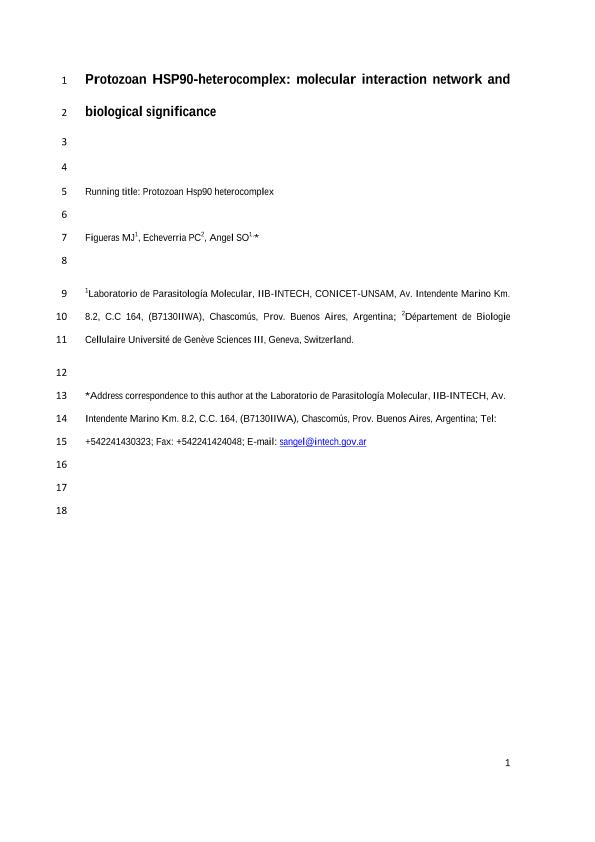Artículo
Protozoan HSP90-heterocomplex: molecular interaction network and biological significance
Fecha de publicación:
05/2014
Editorial:
Bentham Science Publishers
Revista:
Current Protein And Peptide Science
ISSN:
1389-2037
Idioma:
Inglés
Tipo de recurso:
Artículo publicado
Clasificación temática:
Resumen
The HSP90 chaperone is a highly conserved protein from bacteria to higher eukaryotes. In eukaryotes, this chaperone participates in different large complexes, such as the HSP90 heterocomplex, which has important biological roles in cell homeostasis and differentiation. The HSP90-heterocomplex is also named the HSP90/HSP70 cycle because different co-chaperones (HIP, HSP40, HOP, p23, AHA1, immunophilins, PP5) participate in this complex by assembling sequentially, from the early to the mature complex. In this review, we analyze the conservation and relevance of HSP90 and the HSP90-heterocomplex in several protozoan parasites, with emphasis in Plasmodium spp., Toxoplasma spp., Leishmania spp. and Trypanosoma spp. In the last years, there has been an outburst of studies based on yeast two-hybrid methodology, co-immunoprecipitation-mass spectrometry and bioinformatics, which have generated a most comprehensive protein-protein interaction (PPI) network of HSP90 and its co-chaperones. This review analyzes the existing PPI networks of HSP90 and its co-chaperones of some protozoan parasites and discusses the usefulness of these powerful tools to analyze the biological role of the HSP90-heterocomplex in these parasites. The generation of a T. gondii HSP90 heterocomplex PPI network based on experimental data and a recent Plasmodium HSP90 heterocomplex PPI network are also included and discussed. As an example, the putative implication of nuclear transport and chromatin (histones and Sir2) as HSP90-heterocomplex interactors is here discussed.
Palabras clave:
Toxoplasma Gondii
,
Hsp90-Heterocomplex
,
Protozoan
,
Molecular Interactions
Archivos asociados
Licencia
Identificadores
Colecciones
Articulos(IIBBA)
Articulos de INST.DE INVEST.BIOQUIMICAS DE BS.AS(I)
Articulos de INST.DE INVEST.BIOQUIMICAS DE BS.AS(I)
Citación
Figueras López, María Julia; Echeverria, Pablo Christian; Angel, Sergio Oscar; Protozoan HSP90-heterocomplex: molecular interaction network and biological significance; Bentham Science Publishers; Current Protein And Peptide Science; 15; 3; 5-2014; 245-255
Compartir
Altmétricas




